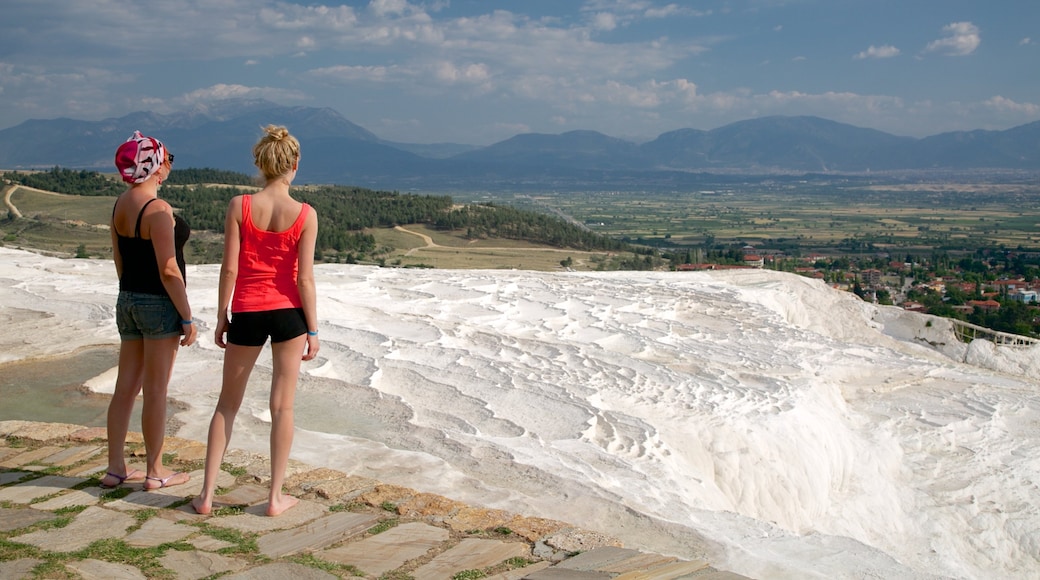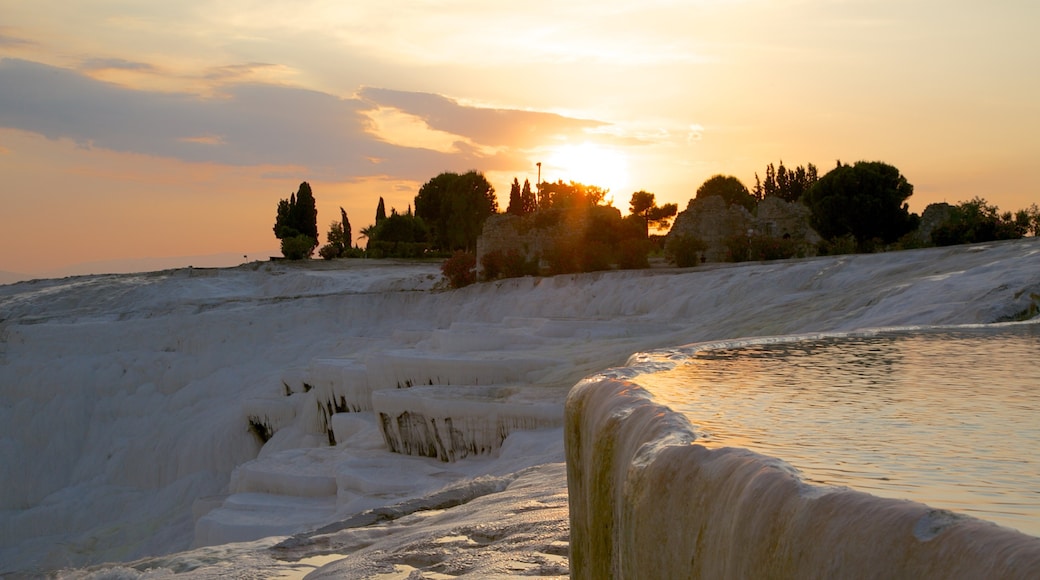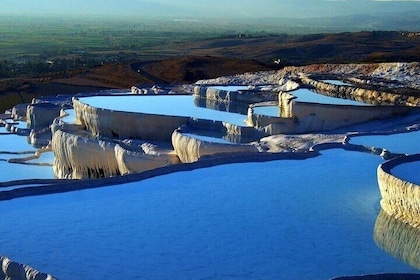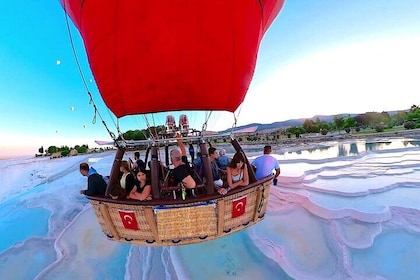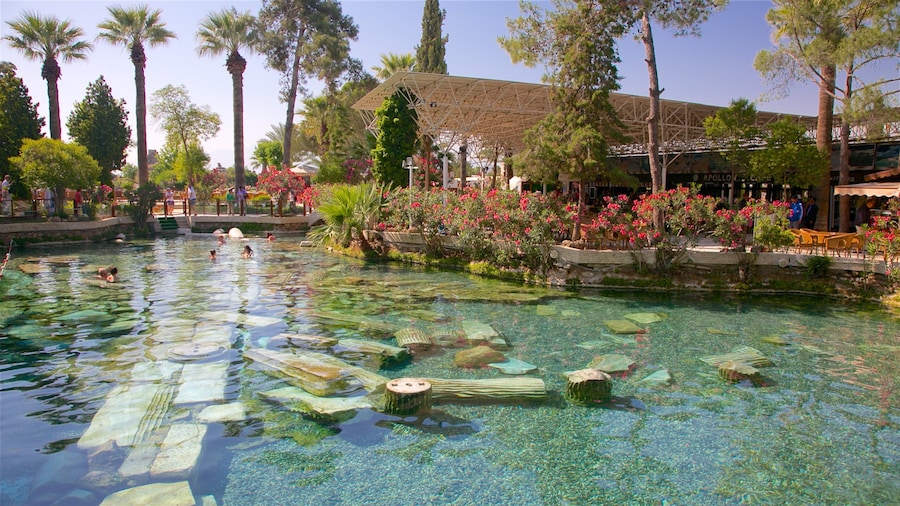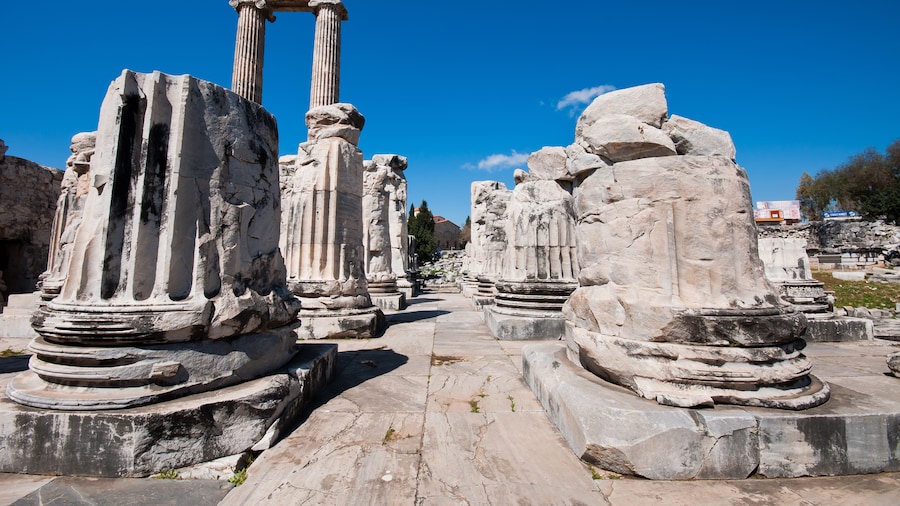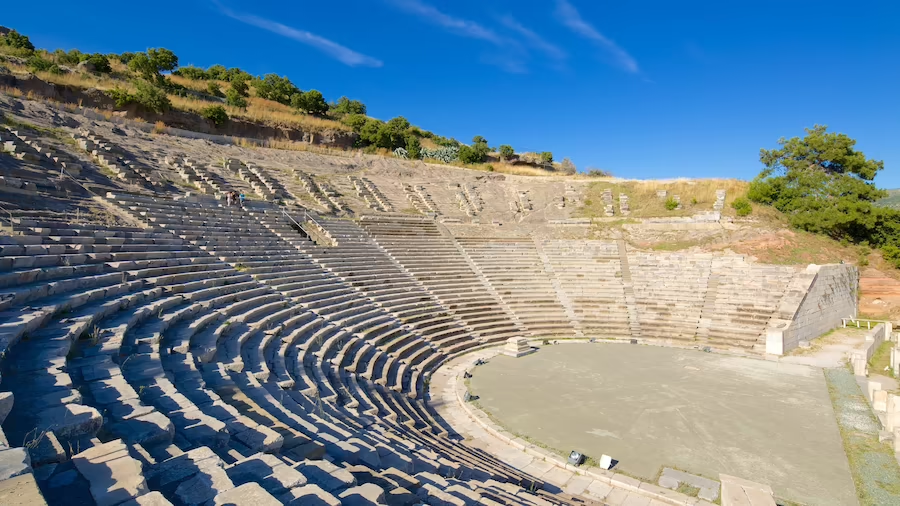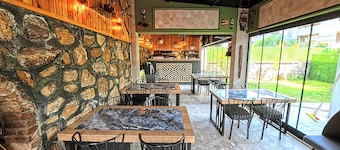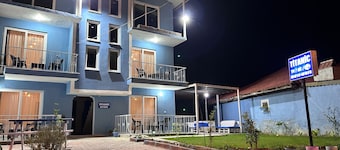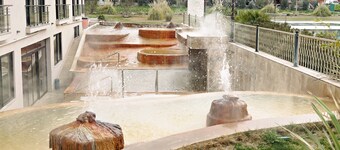Immerse yourself in the healing waters of ancient thermal springs, which are surrounded by the alien landscape of petrified waterfalls and mineral terraces.
The name Pamukkale translates to “Cotton Palace,” referring to the bright white mineral deposits that cover the landscape outside the town. This visually striking region north of Denizli has been a desirable destination for centuries, due to the restorative qualities of its waters. Marvel at the strangeness of a landscape shaped by the calcite in the water, where you can see waterfalls frozen in stone and blue pools in tiered terraces.
The UNESCO-recognized travertine terraces were formed by hot mineral water calcifying upon contact with carbon dioxide. Ask around about the stories that have emerged from this legendary site over thousands of years of people visiting it.
Wander up a path formed from limestone, leaving your shoes behind to protect the look of the terraces. Many of the pools along the route are available for a quick splash in the warm waters. The lower terraces are the only ones open to the public and several parts are closed to protect the spectacular appearance of the mineral deposits.
Bring your camera for panoramic shots of the terraces. Snow-white stalactites fall off the edges while the basins hold enticing, aquamarine water. Come back here at sunset to see this impressive geological formation in a new, magical light.
At the top of the terrace, visit the Antique Pool that is adjacent to the ancient city of Hierapolis. This ancient destination was a public bath during the Roman era and it still features ruins from this time. Swim in a pool that flows over fallen columns from its past.
Drive for 20 minutes north of Denizli to reach the remarkable attraction of Pamukkale. The adjoining town of the same name contains several accommodations for anyone wanting to stay in the region. Some of the hotels come with their own bathing pools from the thermal springs. Visit in the morning to avoid the crowds exploring the stunning limestone terraces, then take some time to explore the ancient city of Hierapolis.
